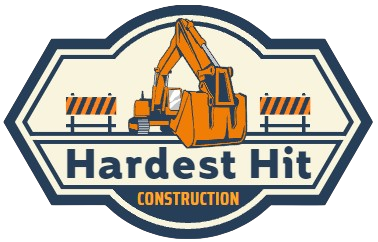Brent Langosh, a seasoned professional in the construction industry, brings a wealth of experience and expertise to the table. With years of hands-on involvement in various construction projects, Langosh has witnessed both the triumphs and pitfalls that come with managing construction endeavors. This article aims to distill Langosh’s expert advice, focusing on common mistakes to avoid in construction, drawing on his valuable insights to guide industry professionals towards successful project outcomes.
Learning from Experience: Brent Langosh’s Background
Brent Langosh has a distinguished career in construction management, having worked on a diverse range of projects, from residential and commercial developments to large-scale infrastructure initiatives. His role has often involved overseeing project planning, execution, and completion, providing him with a holistic understanding of the challenges inherent in the construction process.
Common Mistakes in Construction and Brent Langosh’s Insights:

1. Inadequate Planning:
- Mistake: Rushing into a project without comprehensive planning.
- Langosh’s Insight: “Thorough planning is the backbone of successful construction. It’s about foreseeing challenges and having contingencies in place. Cutting corners in the planning phase often leads to costly delays and rework.”
2. Poor Communication:
- Mistake: Neglecting effective communication among project stakeholders.
- Langosh’s Insight: “Communication breakdowns can be detrimental. Regularly updating all involved parties, from clients to subcontractors, is crucial. It prevents misunderstandings and keeps everyone aligned with project goals.”
3. Ignoring Safety Protocols:
- Mistake: Overlooking safety measures and protocols.
- Langosh’s Insight: “Safety should always be a priority. Neglecting safety protocols not only endangers workers but can also lead to project halts and legal complications. It’s an investment in the well-being of your team and the project’s success.”
4. Underestimating Budgets:
- Mistake: Underestimating project costs.
- Langosh’s Insight: “Accurate budgeting is fundamental. Underestimating costs can lead to financial strain mid-project. Factor in contingencies and be realistic about potential expenses.” Read about the importance of cooperation in construction projects in our article.
5. Inadequate Risk Management:
- Mistake: Failing to identify and manage project risks.
- Langosh’s Insight: “Risk is inherent in construction. Recognizing and addressing risks early on is key. It’s about being proactive instead of reactive, mitigating potential issues before they escalate.”
6. Lack of Flexibility:
- Mistake: Adhering rigidly to initial project plans.
- Langosh’s Insight: “Flexibility is essential. Unexpected challenges will arise, and the ability to adapt without compromising quality or timelines is a hallmark of successful project management.”
7. Poor Vendor/Supplier Selection:
- Mistake: Choosing vendors or suppliers solely based on cost.
- Langosh’s Insight: “Quality should be the priority when selecting partners. Opting for the lowest bidder without considering reliability and quality can lead to subpar work and additional costs in the long run.”
8. Inadequate Documentation:
- Mistake: Neglecting thorough project documentation.
- Langosh’s Insight: “Documentation is your project’s history. From contracts to change orders, comprehensive records are vital for accountability, dispute resolution, and as a resource for future projects.”
Brent Langosh’s Advice on Mitigating Mistakes:

In reflecting on these common mistakes, Brent Langosh emphasizes a proactive and holistic approach to project management. His advice includes:
- Investing in Professional Development: “Stay informed about industry trends, new technologies, and best practices. Continuous learning equips you to navigate the evolving landscape of construction.”
- Building a Strong Team: “Surround yourself with a skilled and dedicated team. A collaborative and capable team can help catch potential issues early and contribute to innovative solutions.”
- Prioritizing Quality: “Quality should be non-negotiable. Cutting corners might seem like a shortcut, but it often results in more significant challenges down the road. Focus on delivering excellence.”
Industry Standards and Guidelines:
For comprehensive information on construction best practices and industry standards, readers are encouraged to explore resources provided by Canada.ca. These platforms offer valuable insights into construction management practices, standards, and guidelines for successful project execution.
Conclusion:
Brent Langosh’s expert advice serves as a beacon for construction professionals aiming to navigate the complexities of their field successfully. By learning from common mistakes and incorporating Langosh’s insights into their approach, project managers and teams can elevate the quality of their work, mitigate risks, and ensure the smooth and efficient delivery of construction projects. As the construction industry continues to evolve, Brent Langosh’s emphasis on planning, communication, and a commitment to excellence remains invaluable for those striving to achieve success in construction management.




